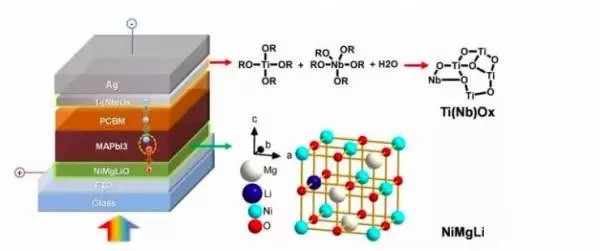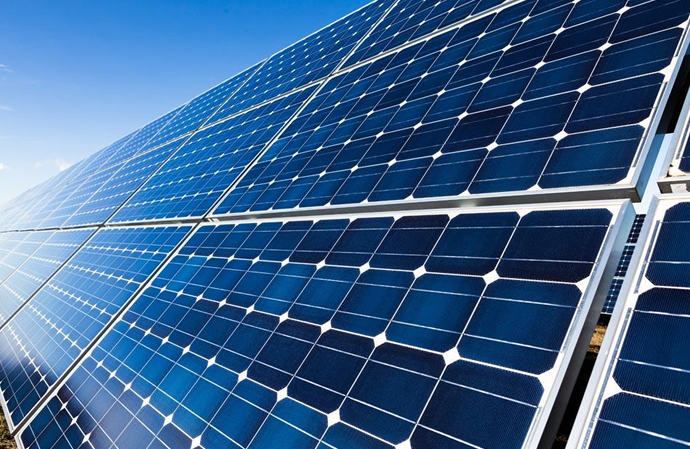The opportunity for photovoltaic power generation is here! The conversion efficiency of perovskite solar cells is greatly improved to 25.2%
Photovoltaic cells can generate energy from the sun and are very useful in solving the current environmental crisis. Perovskite photovoltaic cells, which are made of metal halide perovskite semiconductors, have recently proven promising, as researchers have managed to dramatically increase their energy conversion efficiency from 3.8% to 25.2% all the way.
This significantly improved efficiency makes perovskite a leading contender in developing the next generation of low temperature processable photovoltaic technology. There are two main design prototypes for perovskite photovoltaic cells: the so-called regular (n-i-p) structure and the inverted (p-i-n) structure. So far, the battery with regular structure has achieved the highest power conversion efficiency, while the battery with inverted structure has achieved longer running time.

Resource:Perovskite photovoltaic cells
Researchers at King Abdullah University of Technology (KAUST) and the University of Toronto were recently able to reduce the efficiency gap between previously observed perovskite photovoltaic cells (regular and inverted structures). Their paper, published in the journal Natural Energy, introduced a new design strategy that allows them to manufacture inverted solar cells with long operating life and power conversion efficiency of 22.3%.
"The most efficient perovskite photovoltaic devices are based on conventional structures," Xiaoopeng Zheng, a researcher who participated in the study, told TechXplore. "They must add ionic dopants to the hole transport material." Inverted photovoltaic devices help improve the operational stability of the technology. Unfortunately, the energy conversion efficiency of inverted structure perovskite photovoltaics lags significantly behind conventional structural devices (20.9% vs. 25.2%). "
Xiaopeng Zheng said that for perovskite photovoltaic technology to have real commercial and environmental impact, researchers first need to ensure that they are leading the way in terms of operational stability and power conversion efficiency. He developed a design strategy in collaboration with colleagues at KAUST and the University of Toronto to help achieve this goal by improving the structure and optoelectronic properties of perovskite materials commonly used in the manufacture of photovoltaic devices.

Resource:Perovskite photovoltaic cells
Xiaopeng Zheng and his colleagues added a small amount of surface alkylamine ligands (AALs) with different chain lengths to the perovskite material. This allows them to change some of the material's characteristics, resulting in higher energy conversion efficiency than perovskite photovoltaic solar cells, which are usually observed with inverted structures.
"We found that during processing, only a small amount of alkylamine is sufficient to change the properties of the perovskite material, which is advantageous in the following ways: (1) promote grain orientation; (ii) suppress trap density; (iii) ) Reduce the non-radiative recombination (ie loss) of carriers, improve the carrier's mobility and diffusion length; (iv) inhibit ion migration in perovskite. "Yi Hou, another researcher involved in this research Tell TechXplore.
Zheng, Hou, and their colleagues showed that the AAL surface-modified perovskite film exhibited a (100) orientation, and its density of trapped states was significantly reduced compared to the unmodified film. They also provide enhanced carrier mobility and diffusion length, enabling the device's stable power conversion efficiency to reach 22.3%.
"Perovskite PV is a young technology and they still have room to improve their stability to approach other mature PV technologies such as c-Si and inorganic-based thin films," Ted Sargent, another researcher involved in the study, told TechXplore. "We use trace amounts of alkylamines as grain and interface modifiers, which greatly reduces the efficiency gap between inverted and conventional devices."
The researchers found that the perovskite solar cell manufactured by their method can operate for more than 1,000 hours at the maximum power point under simulated AM1.5 lighting without reducing efficiency. In the future, they will introduce design strategies that can bring perovskite materials closer to the harsh conditions required for commercialization of solar cells.
"In the next phase of our research, we will look for ways to produce perovskite PV to build large-area equipment without sacrificing high performance and reliability," Osman Bakr, another researcher involved in the study, told TechXplore.


View More(Total0)Comment Lists